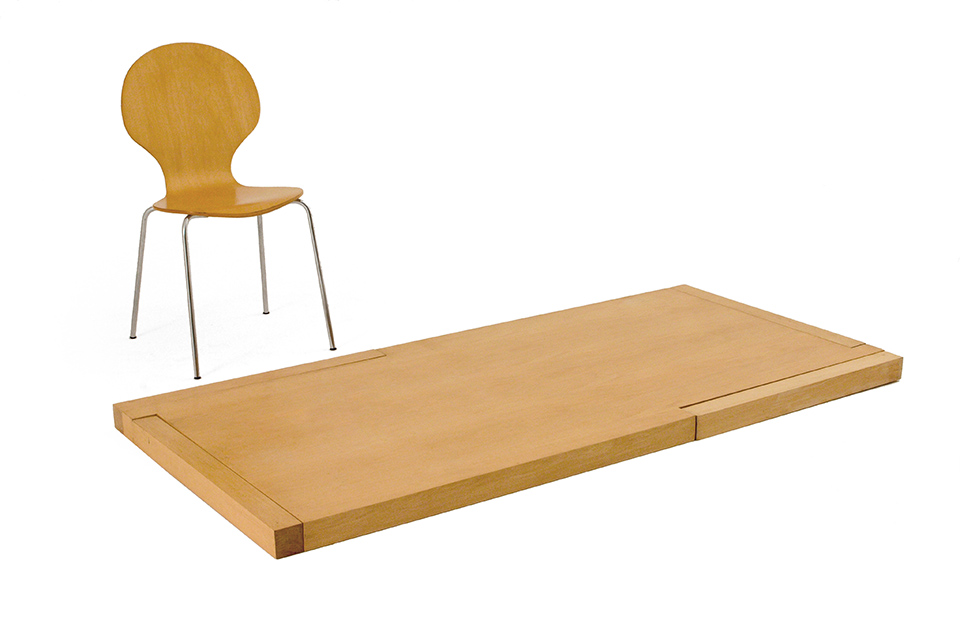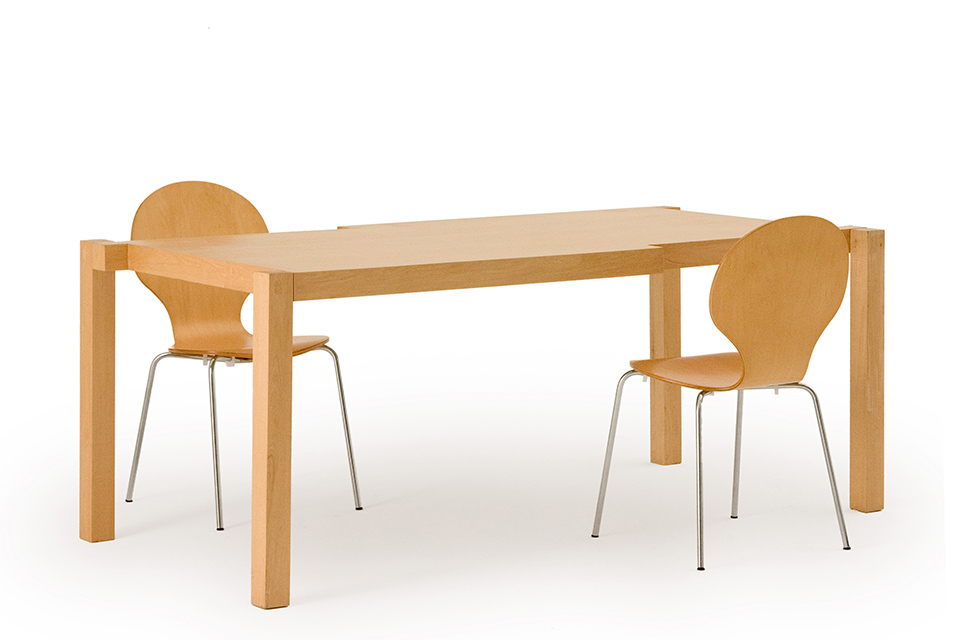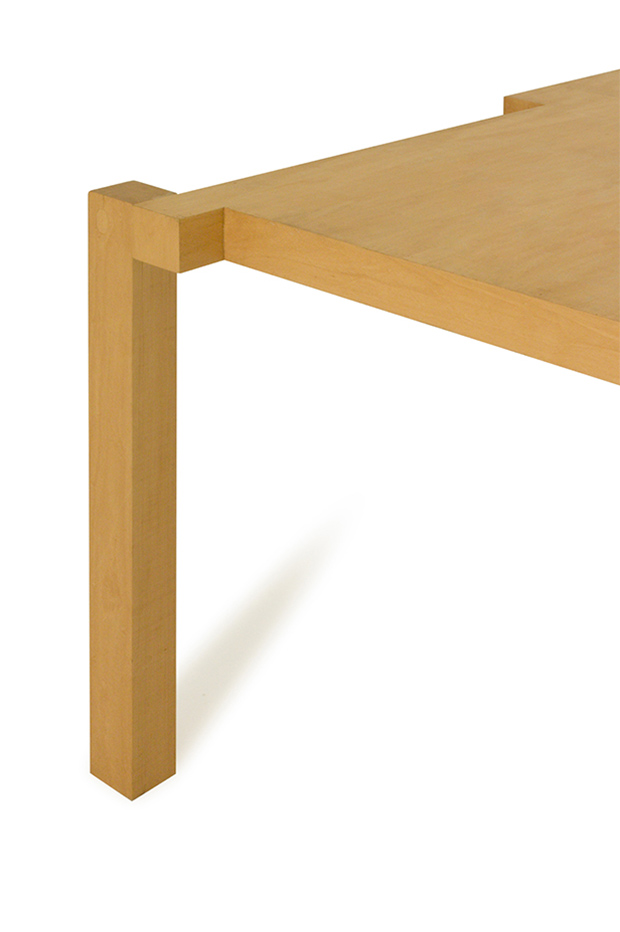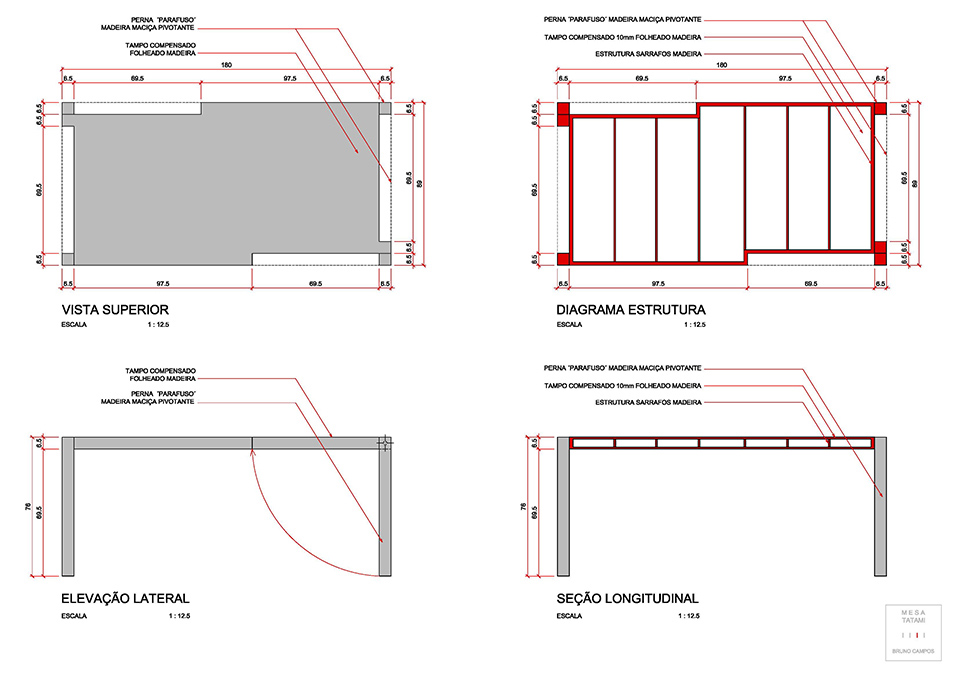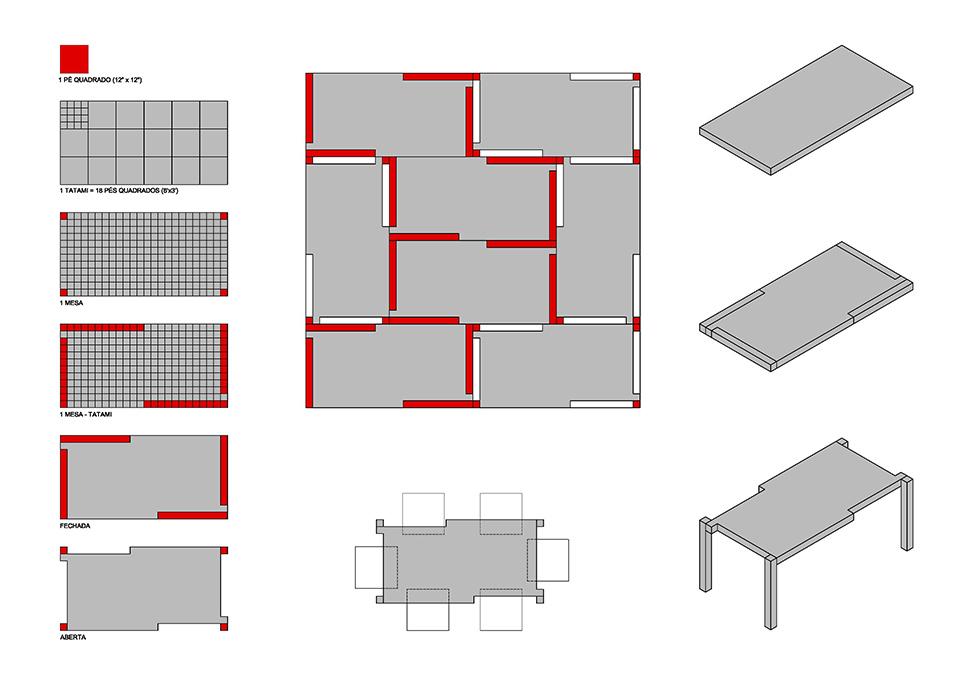Tatami Table


The table has the proportions of a tatami unit: six feet long and three feet wide (eighteen square feet). The basic module’s submultiple is a 1 inch square, which determines the section of the table’s legs, its height (30 inches long) and the tabletop’s thickness (three inches).
From this theoretical rectangle we have a solid plan from which the cuts are made to determine the Tatami-Table’s geometry. The table’s legs are cut off from the Tatami’s surface in a diagonal symmetry and then twisted at a 90º angle, generating an irregular table top.
This cut-and-fold operation gives the impression of solidity and homogeneity of the whole, further reinforced by the absence of joints and apparent connections – obssessions that guided the concept, the detailing and the fabricaton of the object all along. The tabletop’s surface is built as if it were a soli core door, basically plywood box cladded in wood leaf in its four sides and structured internally by battens placed every 10 inches. The table’s legs, however, are solid pieces that are held onto on the tabletop’s structure through a screw and as we spin the pieces they get tighter and tighter against the tabletop, as if they were giant screws, until the moment the legs hit the necessary stiffness in the vertical position (after two laps). To finish it, a small and discreet pressure sphere (on the support’s base and on the side of the tabletop) make the tatami lock on its perfect horizontal position.
The whole table ends up being way lighter than it looks at first sight, and the Tatami-Table’s easy transportation and stocking feature is basically what motivated its simple and unusual design from the start.
